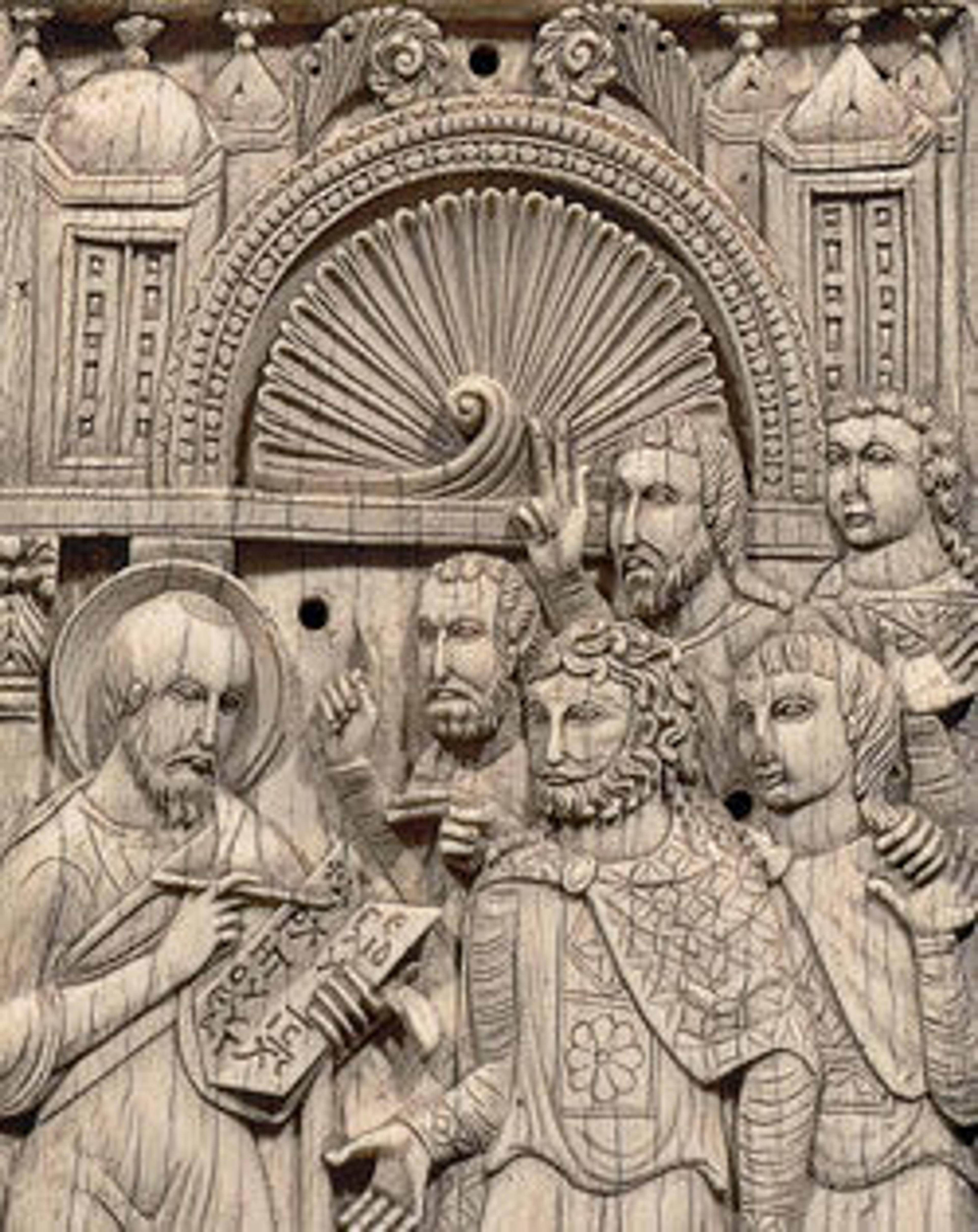Oval bowl with grapevine scrolls inhabited by birds and animals
This oval bowl, made from a single piece of hammered silver, is an example of one of the new vessel forms popular during the second half of the Sasanian period (A.D. 224-651): the shape is typical for wine drinking and most likely derives from Chinese prototypes. The background of the bowl’s exterior was carved out and then gilded, leaving the silver decoration in high relief. Tendrils of vine scrolls, one of the most popular motifs in Sasanian art, are arranged symmetrically along with grape clusters, lotus palmettes, birds and animals. The bearded dancing figure in the center most likely represents Silenos, leader of the satyrs, who along with the grapes and vines, attests to the continuing popularity of imagery associated with the Greek god Dionysos. The cup’s interior features a bird (probably a cock) holding a leaf in its beak, surrounded by bosses created by punching from the exterior surface.
Artwork Details
- Title: Oval bowl with grapevine scrolls inhabited by birds and animals
- Period: Sasanian
- Date: ca. 6th–7th century CE
- Geography: Iran
- Culture: Sasanian
- Medium: Silver, mercury gilding
- Dimensions: 2.76 x 4.37 x 9.17 in. (7.01 x 11.1 x 23.29 cm)
- Credit Line: Fletcher Fund, 1959
- Object Number: 59.130.1
- Curatorial Department: Ancient West Asian Art
More Artwork
Research Resources
The Met provides unparalleled resources for research and welcomes an international community of students and scholars. The Met's Open Access API is where creators and researchers can connect to the The Met collection. Open Access data and public domain images are available for unrestricted commercial and noncommercial use without permission or fee.
To request images under copyright and other restrictions, please use this Image Request form.
Feedback
We continue to research and examine historical and cultural context for objects in The Met collection. If you have comments or questions about this object record, please contact us using the form below. The Museum looks forward to receiving your comments.
